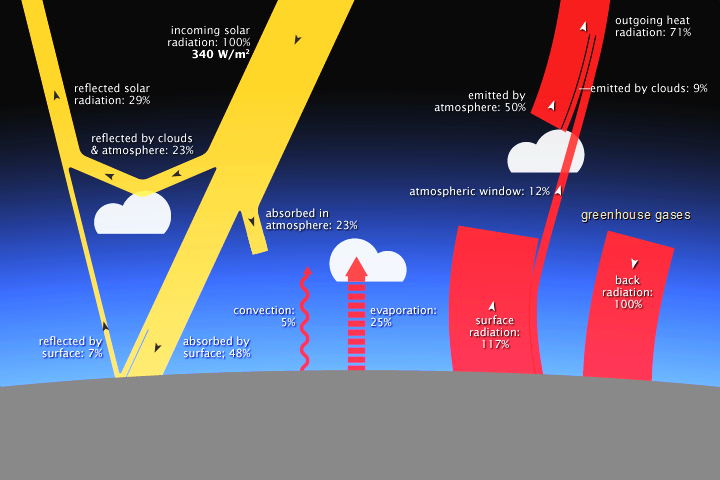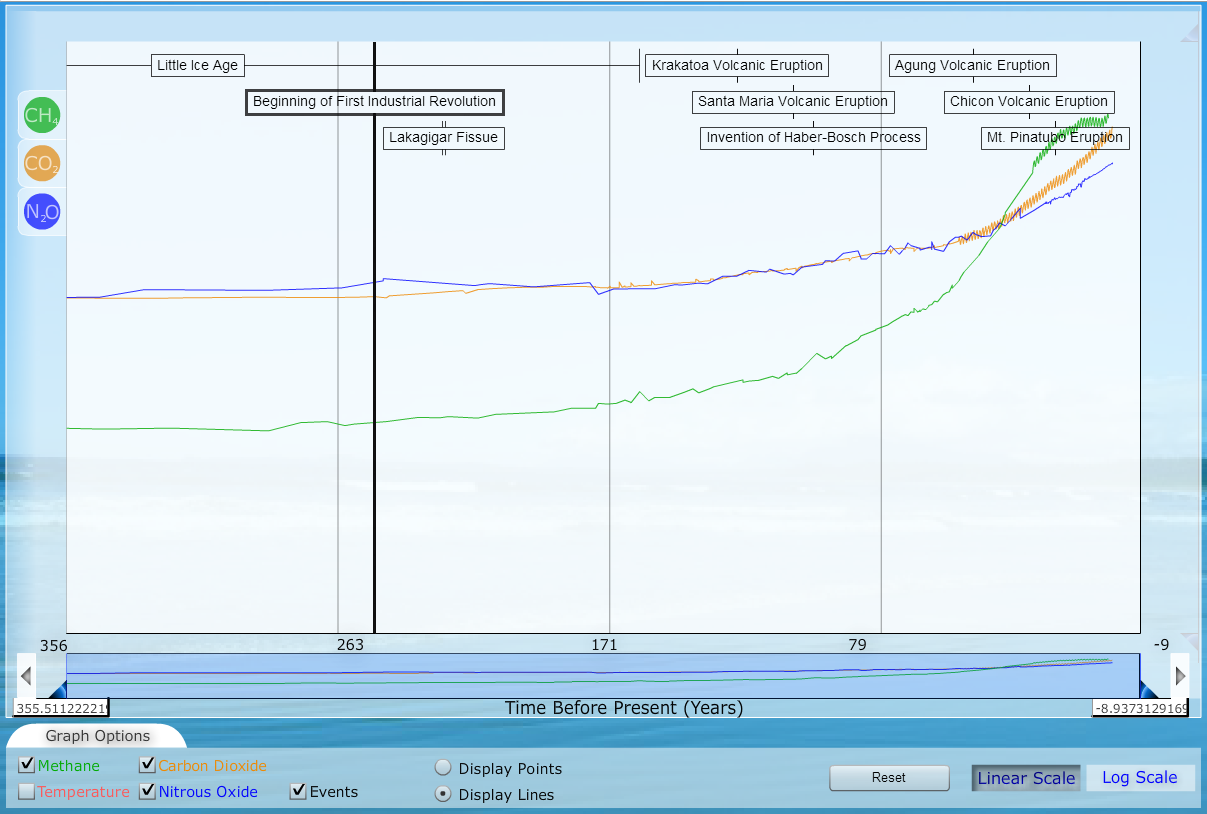The previous Worked Example demonstrates why fossil fuels are so popular. They present an easy means of accessing large amounts of energy and, therefore, are the most common energy source used to meet humanity’s energy requirements. However, the generation of vast quantities of energy comes with a price: fossil fuel combustion also produces carbon dioxide, which alters the Earth’s energy balance.
What Do We Know?

Earth’s energy balance refers to the balance between energy entering and leaving the planet. Energy enters Earth’s atmosphere as solar energy from the Sun. Energy leaves the planet when solar radiation is either reflected or absorbed and re-emitted as infrared (IR) radiation. To maintain a stable climate, the energy flow into and out of the Earth system must be balanced; however, various factors can alter this balance, a phenomenon called radiative forcing.
One important radiative forcer is carbon dioxide, which is a greenhouse gas. When solar radiation is absorbed, the Earth typically re-emits this energy as IR radiation, which can leave the planet. However, greenhouse gases in the atmosphere absorb the IR radiation which has been emitted and prevent this energy from escaping into space. Through a process called collisional de-excitation (which is discussed more fully in Key Idea 1: The Many Faces of Energy), the absorption of IR radiation by greenhouse gases results in atmospheric warming.
The combustion of fossil fuels by humans has produced large amounts of carbon dioxide and other greenhouse gases since the Industrial Revolution. However, as discussed in the lesson on gases, increasing the concentration of greenhouse gas in the atmosphere increases the height from which IR emission into space can occur. In this manner, greenhouse gases in the atmosphere absorb IR radiation, preventing it from escaping into space.
